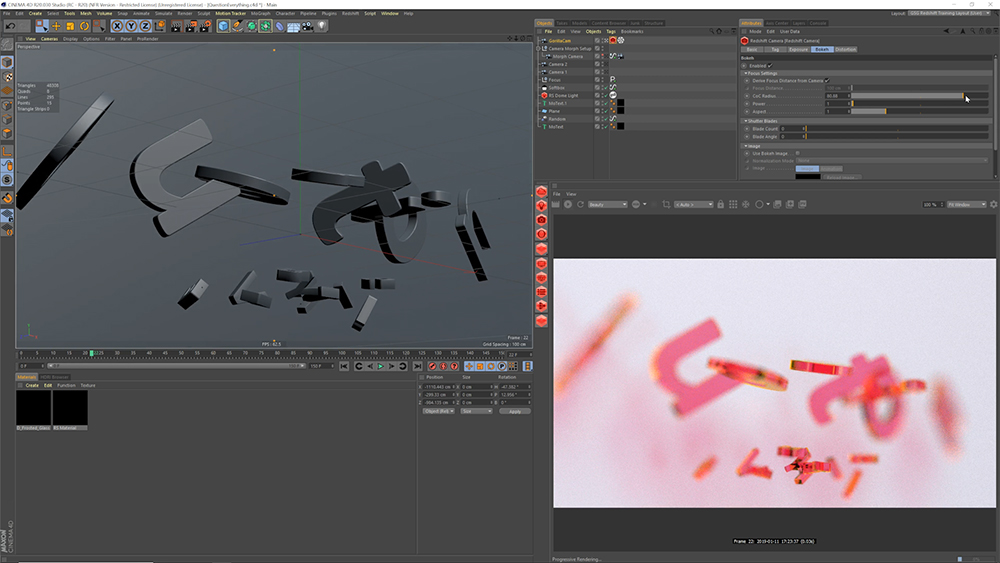
3 Quick Tips for Better and Faster Redshift Renders in Cinema 4D

In this Redshift tutorial, learn how to get rid of noise, animate with depth of field, and more.
With these three easy tips, you’ll learn a few things Nick picked up while going through the Greyscalegorilla Plus Guide to Redshift. Learn how to properly set up your render settings for even faster and better results.
Let’s dive in, and you can also read all the tips down below.
Tip 1: Bring Clone Colors in Redshift
First let’s talk about color. This scene uses Fields in Cinema 4D, but the colors used don’t appear in Redshift. You’ll need to apply a Redshift Material to your cloner.

Double click the material and in the Material Editor click on Edit Shader Graph. Search for and add a Color User Data node. Set the Attribute Name to MoGraph > Color. Now connect the Color User Data node to the RS Material and select Diffuse > Diffuse Color.
Tip 2: Apply Depth of Field
Here are the simple steps to setup Depth of Field in Redshift.

Add a Redshift Camera Tag to your existing camera. With the Redshift tag selected, navigate to the Bokeh tab and check the box marked Enabled. Adjust the CoC Radius slider to achieve the look you want. Fun fact: CoC stands for Circle of confusion!
In this particular render, I also used GorillaCam and the Everyday Material Collection.
Tip 3: Faster Renders With Less Noise
In this tip, we’re gonna setup our scene for a grain-free render by adjusting the proper render settings.

To render faster, it’s going to come down to adjusting the proper Samples. You don’t want to just adjust the overall Unified Sampling in the Render Settings, because that will actually slow things down. You first want to start by adjust the Sample of your Redshift lights.
Adding more light data to your scene will start to clean up your render. You want to increase your samples at a rate of 2x, and don’t be afraid to crank these numbers up really high.
You can also turn up the number of rays in your Brute force global illumination. If you still have a ton of noise, now you can jump back into the render settings and adjust the overall samples.
One of Trevor Kerr’s best quotes from the Greyscalegorilla Plus Guide to Redshift is, “put your samples where they matter.” It really does hold true.





